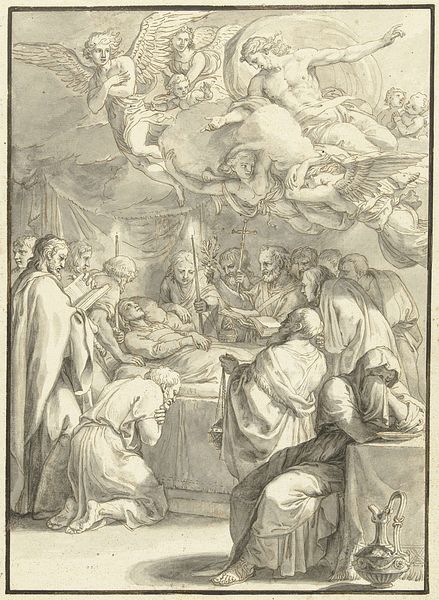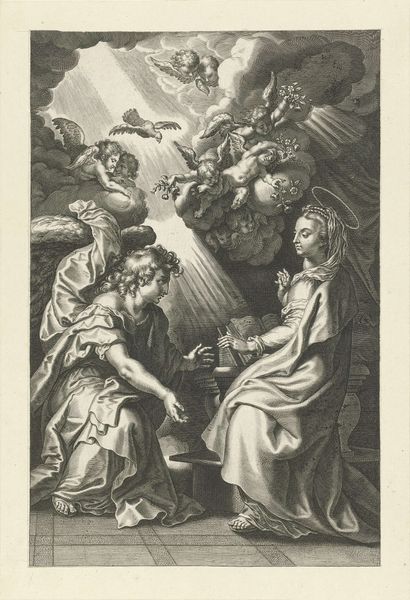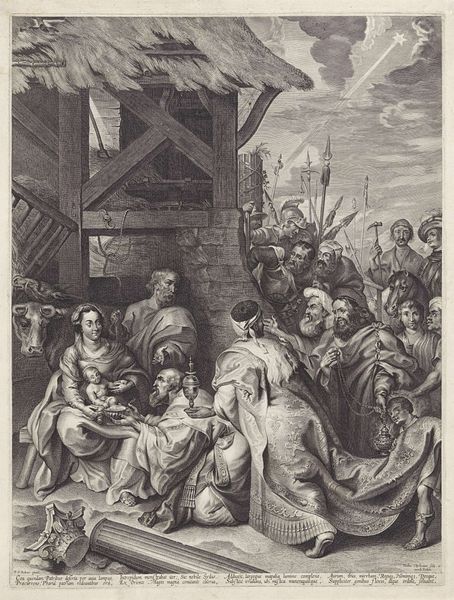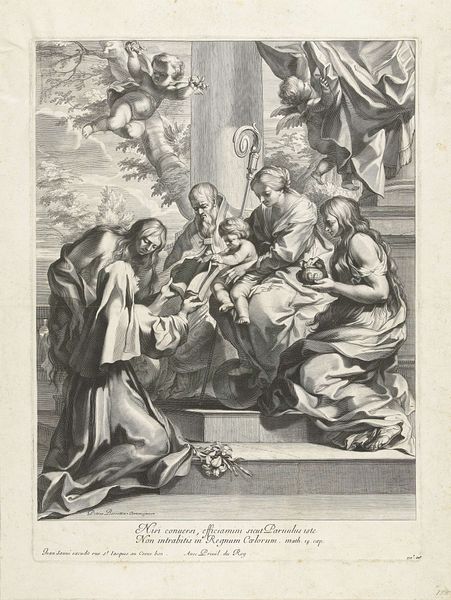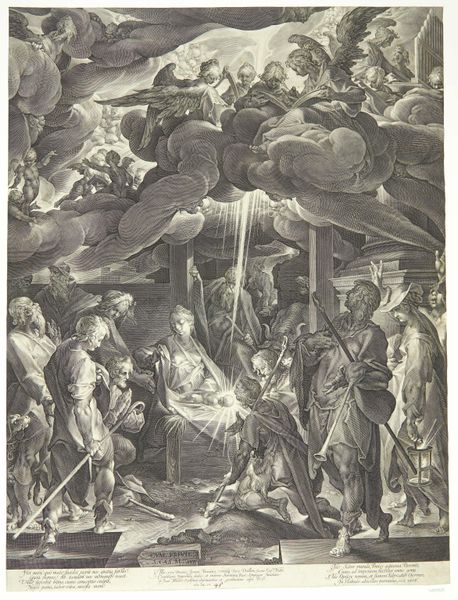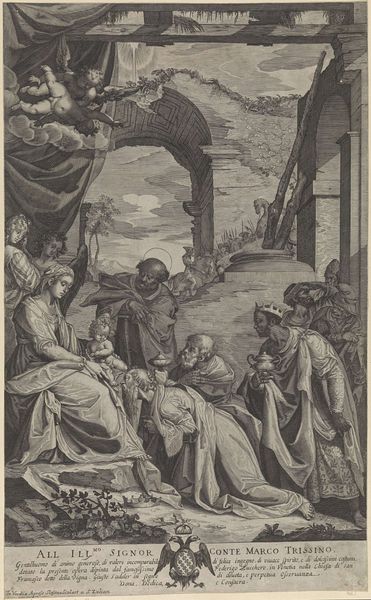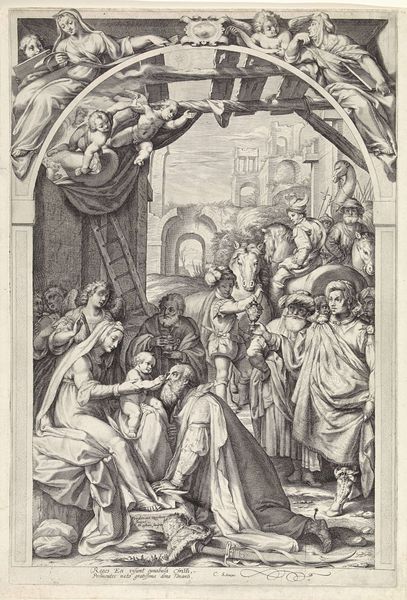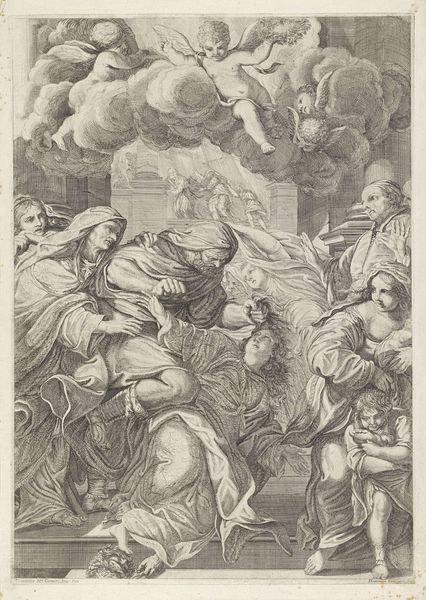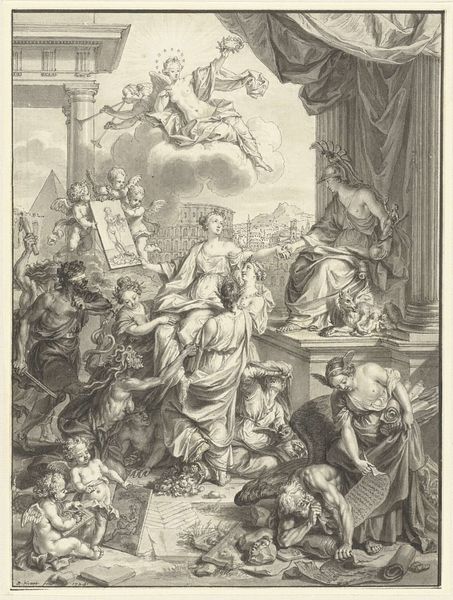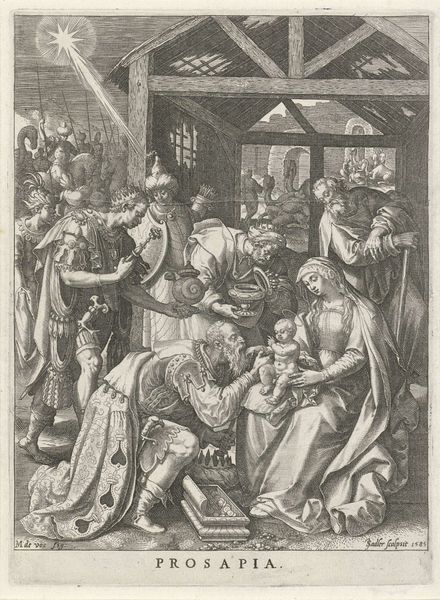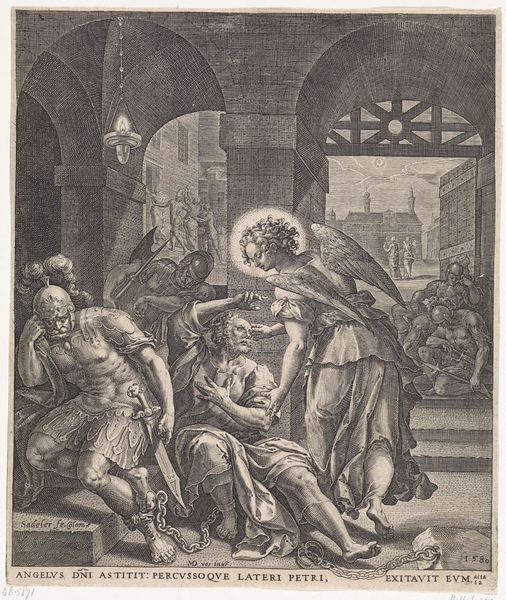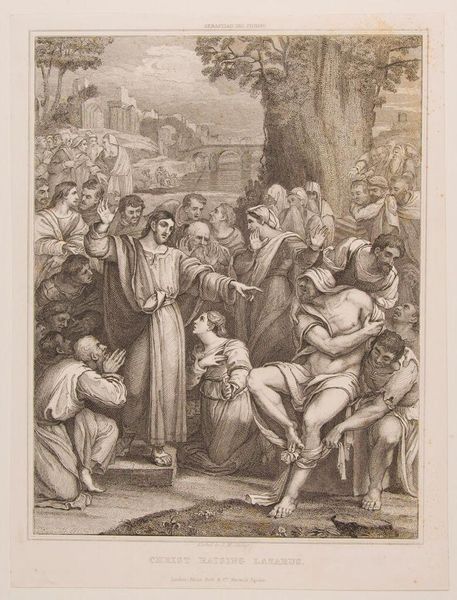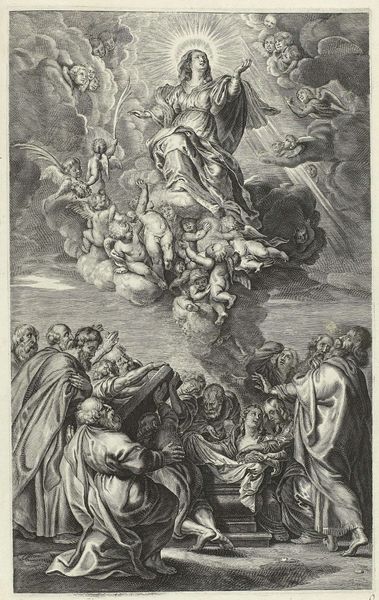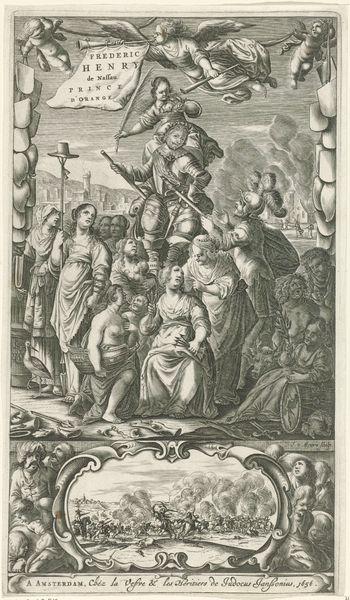
Dimensions: height 399 mm, width 334 mm
Copyright: Rijks Museum: Open Domain
Curator: This engraving by Giovanni David, created between 1753 and 1790, depicts "The Adoration of the Magi." The Rijksmuseum holds this fine example of his work. Editor: It strikes me immediately as very theatrical, almost operatic, with that dramatic spotlight beaming down from the cherubic figures. The textural variety is also captivating, achieved entirely through the lines and tones of the engraving. Curator: Yes, consider how David manipulates light and shadow here. Observe the dynamism of the lines; how they generate depth, almost creating a sense of Baroque stagecraft. Notice especially how the varying densities create visual hierarchies. Editor: Absolutely, and looking closely, it seems almost obsessive in its detailing. One imagines the meticulous work of carving those tiny, incredibly dense lines to achieve such subtle gradations. And given its devotional theme, there's also the interesting labor question inherent: for what and for whom was such intensive creation dedicated? Curator: Indeed, the rigorous execution speaks to the symbolic function of detail. Think of the Baroque period and its ornate sensibilities reflecting ideals of status and grace. The density echoes both the wealth and spiritual richness being conveyed. Editor: That raises questions too – what materials would David have used? The plates themselves, the inks, the paper – were they sourced locally, reflecting an artisanal approach? And, considering how widely engravings were distributed, did that impact the material value attributed to this work versus, say, a painting? Curator: The engraving medium in itself suggests accessibility, wider dissemination, as you suggest. The relatively reproducible format alters the artistic impact significantly; more eyes upon the image necessarily dilute the mystique of a single, unique object. Editor: Fascinating. This exploration certainly casts "The Adoration" in a new light. A humble print, brimming with complex production histories and cultural symbolism. Curator: It's rewarding how a focused attention on its construction exposes those intriguing facets layered underneath a seemingly traditional historical narrative.
Comments
No comments
Be the first to comment and join the conversation on the ultimate creative platform.
